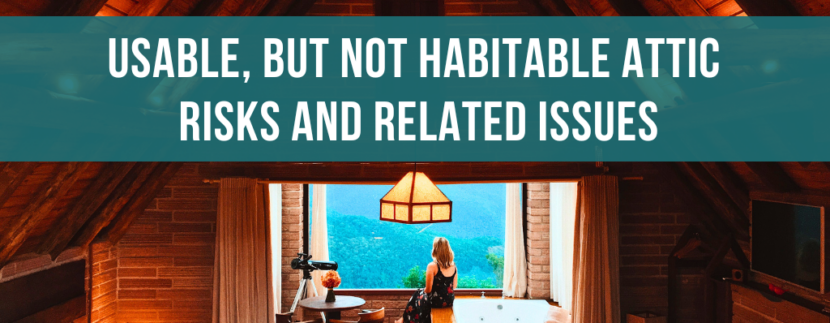Usable, but not habitable attic – risks and related issues

Usable but uninhabitable attic – risks and related issues
If you are buying a house and you are faced with an attic that is stacked as an accessible but uninhabitable attic, don’t feel alone, many people are in your condition and I want to explain to you in simple and clear terms what this means.
Cadastral planimetry in hand, there are two situations we can find.
The first case is where the attic is regularly divided into rooms (photo on the left, case A) and these are registered as attic/loft/storeroom/playroom/store room, etc.
The second case, on the other hand, is where the entire attic is catastatically an open space (photo on the right, case B), while in reality there are dividing walls between several rooms.
In both cases, it means that the attic space meets the requirements of usability, but not habitability, i.e. it CANNOT be inhabited.
Since we are talking about buying a house, let us first consider the price. The attic space cannot be considered 100% of the value. Let me explain. If the house is valued at e.g. €1,000 per square metre and its composition is 50 square metres of flat and 50 square metres of attic, the cost of the house will not be €100,000.
Let’s see for example the norm that regulates the weighting coefficients, Uni 10750 of 2005. The non-habitable attics, with a minimum average height of less than 2.40 meters and a minimum height of 1.50 meters, are given with a coefficient of 35%. That is to say that for the proposed example the value to measure would be of 67.500 €.
The coefficient is not always applied, but it can reach 50% of the inhabitable value, but it never reaches 100%.
Is it possible to regularise it?
Yes, if the attic has the requirements of habitability, such as height, areoilluminant ratio (the proportion between the surface of the windows and that of the floor), the surface area of the rooms according to the intended use and if there are excess cubic spaces still available to use them.
But if you are buying and you are faced with this situation, it is likely that if it had been possible to regularize the situation the owners would have done it to sell you the house at a higher price!
So what if it cannot be regularised?
In the overwhelming of cases this is the case. And I am sorry, but there is nothing to be done.
If we are faced with case A, presented earlier, with the partitions (separating walls) marked correctly, we will be faced with small rooms that cannot be used as bedrooms, unless you do some work such as raising the roof, increasing the windows size , etc. But the house from the cadastral point of view is perfectly fine. We will only have to explain to the buyer that the rooms on the attic floor cannot be converted into bedrooms.
Attic space that is usable but not habitable means that the space meets standard safety, hygiene and health requirements, but not habitability, i.e. it cannot be lived in.
Case B, where the property is registered as open space, but smaller rooms have been created instead, is more complex and, alas, more frequent. Here it is necessary to proceed with renovation, i.e. the demolition of all partitions and any installations, such as bathrooms.
If you (the sellers) do not restore the state of the site, as set out in the building permit, you will face two main problems:
- The buyer applying for a mortgage will have an appraiser visit the house and he will immediately notice the construction abuse. In serious cases he may not approve the sale, for all others, he will however lower the valuation of the house by the cost of the work needed to rectify it. What this means? is the house worth 70,000€? The appraiser may estimate that demolishing the partitions and removing the fixtures will cost 10,000 € and thus the total valuation of the house is reduced to 60,000 €.
- When before the notary while stipulating both you and the buyer declare that the house is compliant, this is forgery! The Criminal Code punishes forgery quite strictly. Find out from your notary what this may entail now and in the future.
The phrases with which the notary will make you declare are such as “the parties declare that the cadastral data and the plans are in conformity with the state of affairs, on the basis of the provisions in force, and that in any case there are no significant discrepancies such as to affect the calculation of the cadastral income and to give rise to the obligation to submit a new plan” or “the selling party declares that the cadastral data and the aforesaid plans are in conformity with the state of affairs and that no report of cadastral variation has been filed and is yet to be entered in the deeds.
The acquiring party confirms what has just been declared by the alienating party with regard to the conformity of the aforesaid plans with the actual state of affairs, having directly ascertained this“.
These are not sentences to be signed lightly. When one declares oneself in a public deed, it must be true!
Sources:

